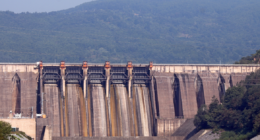Kenya’s agricultural landscape is undergoing a transformative journey, thanks to the integration of smart agriculture technologies. In this blog, we’ll explore the innovative tech solutions that are revolutionizing traditional farming practices and empowering Kenyan farmers for a more sustainable and productive future, with a closer look at some inspiring success stories.
1. Precision Farming
Meet Samuel, a smallholder farmer in central Kenya. By embracing precision farming, Samuel increased his crop yields significantly. GPS-guided tractors and smart irrigation systems optimized resource usage, resulting in improved efficiency and profitability for his farm.
2. IoT-enabled Farming
Jane, a progressive farmer in the Rift Valley, has embraced IoT devices to monitor her large-scale farm. With smart sensors providing real-time data on soil conditions and crop health, Jane has successfully identified and addressed potential issues, leading to healthier crops and higher yields.
3. Mobile Apps for Farm Management
David, a tech-savvy farmer in western Kenya, uses a dedicated farm management app. This tool has streamlined his operations, from crop planning to pest control. David can now make informed decisions on the go, contributing to better outcomes for his farm.
4. Drones in Agriculture: Sarah, an agri-entrepreneur, adopted drone technology to monitor her expansive farm in the Kenyan highlands. Drones equipped with advanced imaging capabilities helped Sarah identify areas of pest infestation and nutrient deficiencies promptly. This proactive approach led to increased crop quality and minimized losses.
5. Blockchain for Supply Chain Transparency
James, a forward-thinking coffee farmer, joined a blockchain-enabled supply chain initiative. By recording and tracing the journey of his coffee beans, James established transparency in the supply chain, attracting premium prices for his produce in international markets.
6. AgriTech Financing Platforms: Emily, a young farmer looking to expand her operations, found support through an AgriTech financing platform. The platform’s data-driven approach assessed Emily’s creditworthiness, providing her with the necessary funds to invest in new crops and equipment, ultimately boosting her farm’s productivity.
7. Satellite Imaging for Crop Monitoring
Michael, a farmer in arid regions, harnessed satellite imaging for efficient water management. By analyzing satellite data, Michael optimized irrigation schedules, ensuring water conservation and maximizing crop yields even in challenging climates.
8. Climate-Smart Agriculture
Peter, a resilient farmer facing climate uncertainties, embraced climate-smart agriculture practices. By integrating resilient crop varieties and implementing adaptive strategies based on climate predictions, Peter safeguarded his farm against environmental challenges and maintained a steady income.
Conclusion
These success stories showcase how smart agriculture technologies are not just theoretical concepts but practical solutions making a tangible impact on the lives of Kenyan farmers. As more individuals like Samuel, Jane, David, Sarah, James, Emily, Michael, and Peter adopt these innovations, the future of agriculture in Kenya looks promising—where technology and tradition converge for sustainable, profitable, and resilient farming practices.










